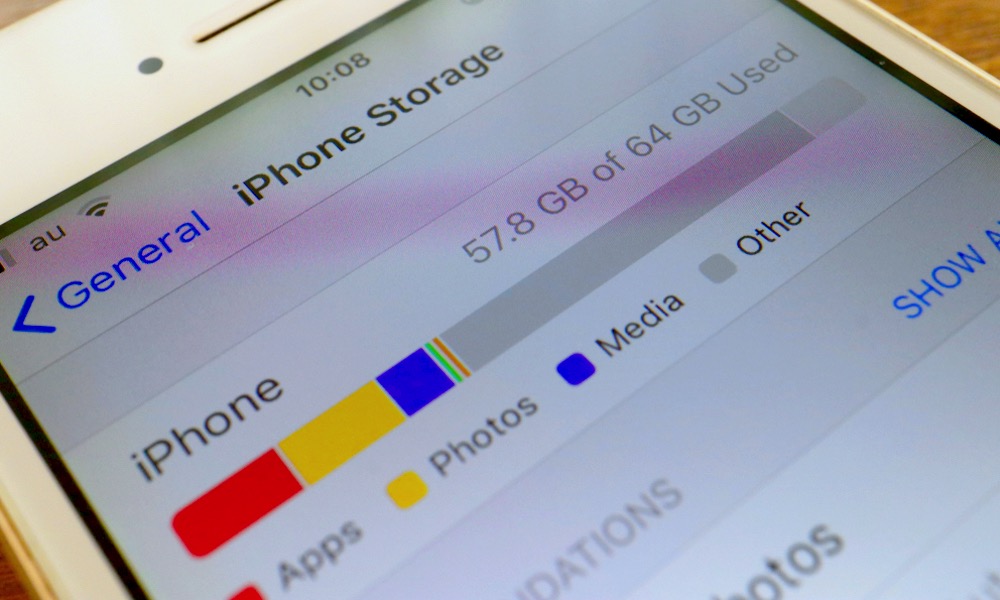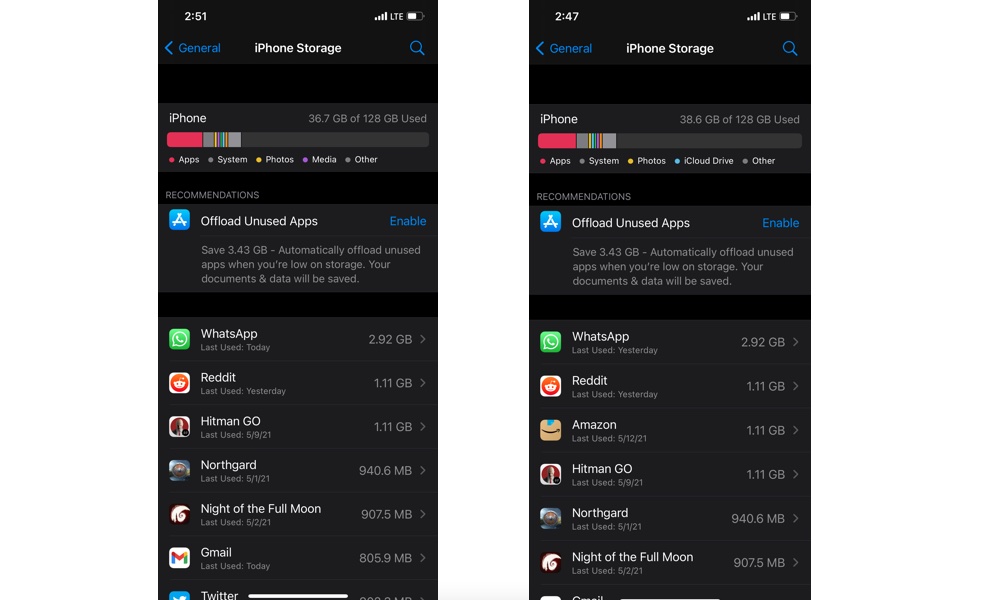What the Heck Is ‘Other’ Storage on My iPhone and How Do I Get Rid of It?
 Credit: Slyellow / Shutterstock
Credit: Slyellow / ShutterstockToggle Dark Mode
There will be times when your iPhone runs out of space. It’s annoying, but since the iPhone doesn’t have any way to add storage, you’ll have to delete some apps and files to free up some room. If you’ve tried to do this before, you’ve probably found the “Other” storage and thought: “What the heck is this? Is it junk?” And the truth is, you might not need all of it, but the “Other” storage is also important. Here’s what that “Other” storage means and how you can get rid of it.
What Is iPhone’s Other Storage?
The iPhone’s “Other” storage contains files and data generated by apps that can’t be assigned to another category. In most cases, this storage is related to cache. Meaning it’s a collection of (temporary) files and data such as thumbnails, websites, forms, etc.
The good news is that you can remove this storage from your iPhone. The bad news is that it takes a few steps to get rid of it.
In addition to cache, “Other” storage also contains many types of different files. In it, you’ll mostly find:
- Siri’s voice
- System data
- Offline sites saved on Safari
- Keychain data
- Setting preferences
- User logs
- App or system settings
It’s worth noting that the “Other” storage doesn’t contain useless files. It has files and data that allow apps to work or to display content faster. You won’t be able to get rid of all the “Other” storage, but you can reduce it drastically.
How Can You Check Your iPhone’s Storage?
You can check the storage space on your iPhone by going into:
- Settings
- General
- iPhone Storage
You’ll see a colored bar with different categories that appears at the top, with “Other” having a light gray color. If you want to see how many gigabytes “Other” storage is using, scroll all the way to the bottom.
Can I Delete “Other” Storage Data?
Yes, but not completely. First, it is not possible to manually delete cached files. iOS does this automatically, but it won’t delete all the temporary files. Since there are many files contained in “Other” storage, you can’t just press a button to delete it all. However, you can delete items that take up Other storage. To avoid any issues, I strongly suggest that you back up your iPad or iPhone. Once you’ve done that, follow the next tips.
How Can You Clear Your iPhone’s Other Storage?
Here are some of the easiest ways to delete your iPhone’s Other Storage. Keep in mind that you won’t be able to get rid of it completely and it’ll probably fill up again as you use Safari and other apps.
Empty Safari’s cache
The cache of Safari can be quickly cleared from your iPhone. Just do the following:
- Open Settings.
- Scroll down and select Safari.
- Scroll down and tap Clear History and Website Data.
If you want, you can also delete the website data from a specific URL. That way, you won’t lose other data you do want or your cookies.
Instead of selecting Clear History and Website Data, scroll to the bottom and tap Advanced. Then tap on Website Data and tap the websites you want to delete.
You can also tap Remove All Website Data.
Manually Clear the Cache of Your Apps
Some applications work like browsers. They store data in the cache memory so that, at a later time, some functions load quicker. Not all applications reset in the same way, and from this point of view, Apple has never provided guidelines to developers or a standard behavior to use. As a result, finding the cache can be more or less lengthy, depending on the applications that you have installed.
What you have to do is open each application, access its settings, and look for some function that lets you wipe the cache. This feature will not be present on all apps.
Some apps such as Dropbox, Google Maps, and Twitter allow you to clear the cache, but the button is quite hidden. In this case, you can find it by going into the app’s settings and search for something related to privacy or data usage. Then just look for the option to delete media or web storage.
If you run into apps that don’t let you delete cache easily, you can delete the app completely from your iPhone and reinstall it again. For most applications, just log in, and all your data will be available again. If not, be sure to make a backup before deleting an app.
Delete Additional VoiceOver Voices
If you use VoiceOver or have downloaded additional Siri voices, you can delete everything you’re not using to free up some space. To delete the additional voices you must go to Settings > Accessibility > VoiceOver > Speech > Voice. Then tap on the voice you want to delete and, if it has an Edit button on the top right corner, tap on it. Finally, tap the minus button on the left side.
Restart Your iPhone
Several cache files remain in memory until the device is turned off or restarted. To free up some space, even if only temporarily, you can do a forced reboot.
- If you have an iPhone 8 or newer, press the volume up key, the volume down key, and then press and hold the side button until the Apple logo appears on the screen. Even when the “slide to turn off” your iPhone appears, ignore it and continue to hold down the side button. After the reboot, you will have a little bit more free memory.
- For the iPhone 7 or older, you need to press the Sleep and Wake button and the Home button until the Apple Logo appears on your screen.
Reset Device Settings
You can also reset your device settings to check if this frees up space on your iPhone. This won’t delete any media you have on your iPhone, but it will delete your settings and your Apple Pay cards. If you’re going to do this, make sure you’re not deleting anything important first.
- Open Settings.
- Tap General.
- Scroll down and select Reset.Â
- Select Reset All Settings.







